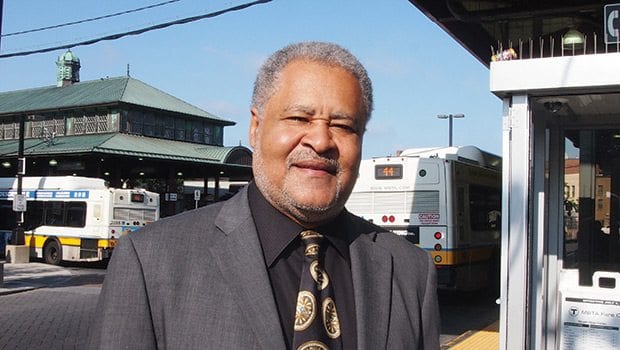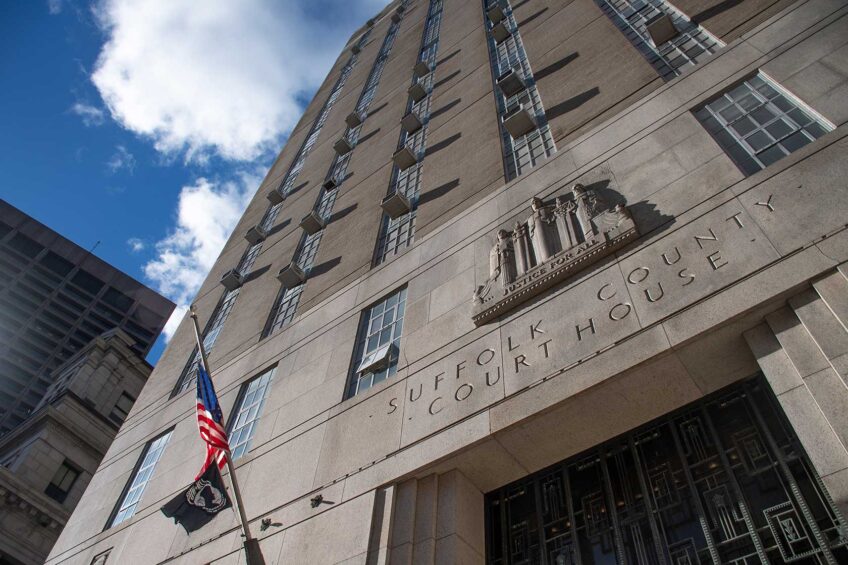
When labor activists clashed with members of the Roxbury Strategic Master Plan Oversight Committee, some posed a critical question to the committee members, asking what gives that body the right to make decisions on behalf of Roxbury residents.
Most members were appointed by former Mayor Thomas Menino. None were elected to represent the views of the neighborhood residents.
Questions about the legitimacy of the RSMOC, and the absence of a neighborhood-wide development review committee, have led to calls for the re-establishment of the long-defunct Roxbury Neighborhood Council.
“It’s absolutely critical that we have one organization that looks at all phases of planning and development,” said City Councilor Tito Jackson. “It is critical that the people who live in Roxbury and other neighborhoods have the right and ability to determine what type of development should happen in their neighborhood.”
The first council
The Roxbury Neighborhood Council was originally established 1986, an outgrowth of the Greater Roxbury Neighborhood Authority, a community organization that sought community control over development in Roxbury.
“We said that the city was illegally disposing of land in Roxbury because there was no master plan governing the process,” said former City Councilor Chuck Turner, who in the 1980s was a member of the Greater Roxbury Neighborhood Authority.
The push for neighborhood councils in Boston mirrored a national trend toward greater community control. Neighborhood councils in cities like New York were given real veto power over development projects. In the 1983 city election, the organizing group Mass Fair Share placed a non-binding referendum on the ballot calling for the establishment of neighborhood councils with veto power. The measure passed by a two-to-one margin.
In 1984, after Raymond Flynn was elected mayor, his administration released plans to establish neighborhood councils in five areas, including West Roxbury, Codman Square and Chinatown. The Flynn administration recognized the Roxbury group as the official council for the neighborhood. Like the other neighborhood councils, the RNC was given advisory authority, not the power that activists had sought to approve or kill projects.
In their heyday of the ’80s and early ’90s, the neighborhood councils held annual elections in which residents were elected both at-large and from districts within their areas.
The Roxbury Neighborhood Council’s powers are outlined in the BRA’s Article 50, which mandates that the BRA give the body 30 days to review any project submitted to the agency before the project is approved. The RNC was effective, in spite of its inability to override BRA decisions, said former RNC member Bob Terrell.
“Usually, through our political strength, we were able to get the BRA to do what we wanted,” Terrell said. “Most of the time.”
A push for community control
RNC members did seek community control, appealing to the City Council to craft an ordinance that would give them the power to stop undesirable development projects. The legislation was defeated by an 8-5 vote, Terrell recalls.
One neighborhood council still operating is in Jamaica Plan. That body still functions with an elected membership.
The issue of community control remains a sticking point, says JPNC member Benjamin Day. On behalf of the JPNC, Day sued the BRA over its approval of a project to build luxury condominiums on South Huntington Avenue, at the site of the former Home for Little Wanderers building. The council objected to the project, advanced by Boston Residential Group, on the grounds that it had too few affordable units and blocked pedestrian access to the Jamaica Way. The court ruled that the council had no standing to sue the BRA, having no real authority over the development process.
“There is no process,” Day says. “It’s whatever the city or the BRA wants to do.”
While the JPNC was able to settle out of court, squeezing more affordable units and a compromise on pedestrian access out of the developer, scuffles between neighborhood groups and the BRA have not been uncommon in recent years.
BRA Chief of Staff Heather Campisano said her agency works to build consensus between neighbors and developers.
“The goal when entering a project is to strike a balance,” she said. “The developer may not always get everything they want and the neighbors may not get everything they want.”
Diffused neighborhood power
Neighborhood groups in Boston typically weigh in on development projects when the approval of city agencies is required. Projects developed on city-owned land, projects that require zoning variances and large development projects of 50,000 square feet or more which trigger the BRA’s Article 80 review process, all are subject to neighborhood review.
The BRA works with the Mayor’s Office of Neighborhood Services to identify community groups active in the area, then notifies them of public meetings for upcoming development projects. The BRA can also appoint neighborhood residents to Impact Advisory Groups, ad-hoc committees that give neighborhood input to the process.
The Roxbury Strategic Master Plan Oversight Committee has been the most active advisory group in that neighborhood, yet it oversees just eight parcels of land. Beyond that group’s purview are dozens of city-owned land parcels and numerous projects that require variances from the city Zoning Board of Appeal. Major public construction projects currently under consideration are the Boston Public Schools’ proposed redevelopment of the Dearborn School and the proposed $339 million redevelopment of the Whittier Street public housing site and its surrounding neighborhood.
In Roxbury, neighborhood associations and special advisory groups, such as the now-
disbanded Blue Hill Avenue Task Force and Dudley Vision Advisory Task Force, provide neighborhood residents the opportunity to weigh in on development projects.
Sometimes, development projects fall through the cracks. In 2011, when the Department of Neighborhood Development issued a request for proposals for 280-290 Warren Street, abutters and representatives of nearby neighborhood associations were not notified. The land disposition process was halted after neighbors complained they weren’t given a chance to review the proposals for the site.
Terrell said requests for proposals should not go to developers without input from a neighborhood council.
“The process we had before, which we need to bring back and strengthen, is that an RFP should not be published until the Boston Redevelopment Authority or Department of Neighborhood Development sits down with the community and decides what should go on that land,” he said.
Jackson agreed that planning for Roxbury should be driven by the vision of Roxbury residents.
“We need comprehensive planning that looks at housing, economic development and community sustainability,” he said. “The time is now and we must move with urgency.”







